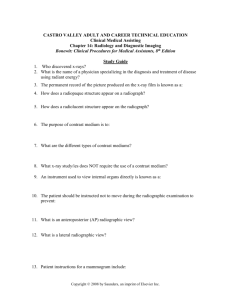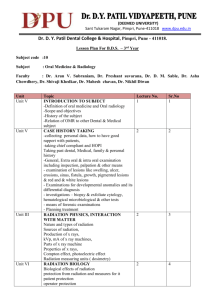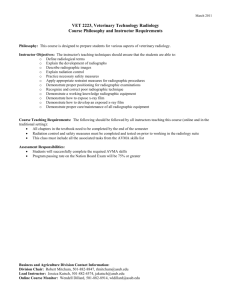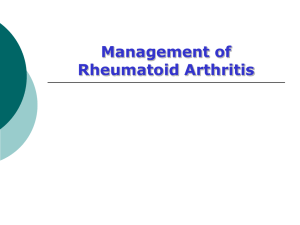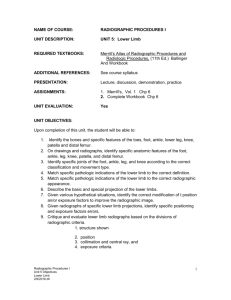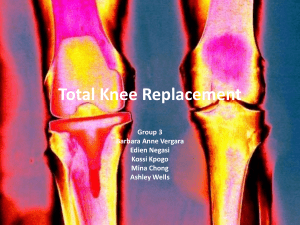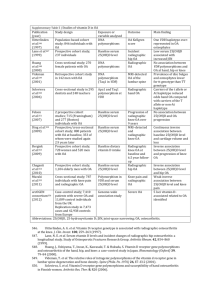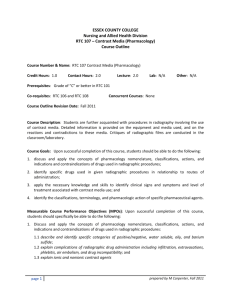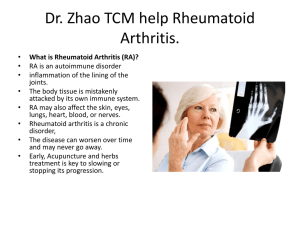Altman, R (1991) OA characteristics review
advertisement
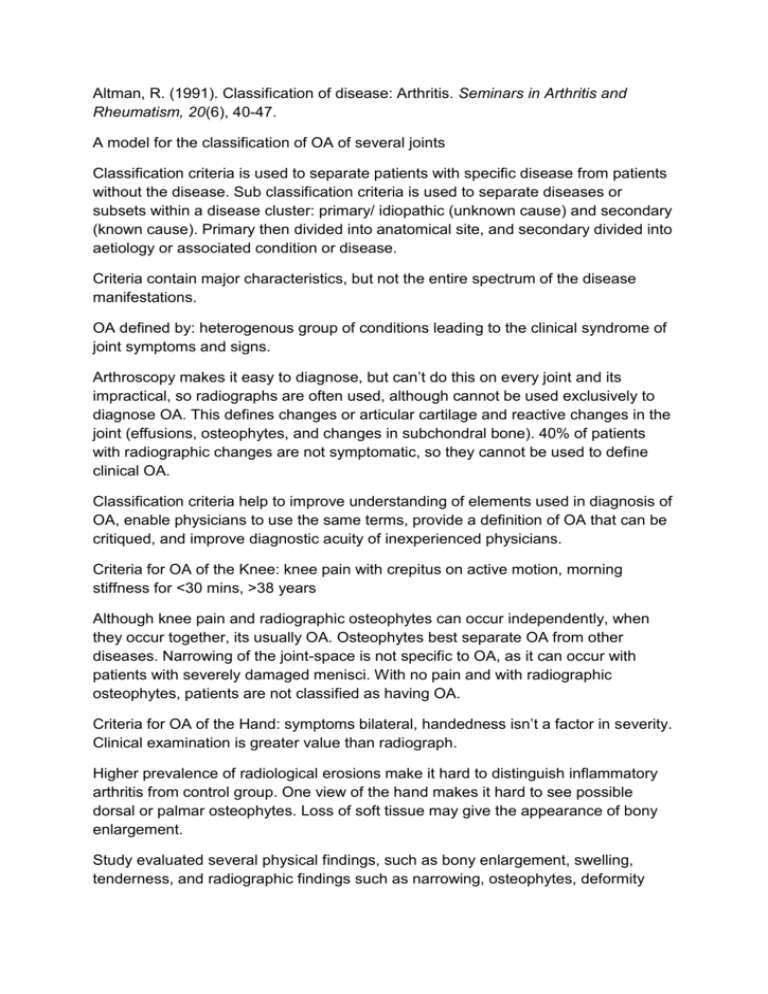
Altman, R. (1991). Classification of disease: Arthritis. Seminars in Arthritis and Rheumatism, 20(6), 40-47. A model for the classification of OA of several joints Classification criteria is used to separate patients with specific disease from patients without the disease. Sub classification criteria is used to separate diseases or subsets within a disease cluster: primary/ idiopathic (unknown cause) and secondary (known cause). Primary then divided into anatomical site, and secondary divided into aetiology or associated condition or disease. Criteria contain major characteristics, but not the entire spectrum of the disease manifestations. OA defined by: heterogenous group of conditions leading to the clinical syndrome of joint symptoms and signs. Arthroscopy makes it easy to diagnose, but can’t do this on every joint and its impractical, so radiographs are often used, although cannot be used exclusively to diagnose OA. This defines changes or articular cartilage and reactive changes in the joint (effusions, osteophytes, and changes in subchondral bone). 40% of patients with radiographic changes are not symptomatic, so they cannot be used to define clinical OA. Classification criteria help to improve understanding of elements used in diagnosis of OA, enable physicians to use the same terms, provide a definition of OA that can be critiqued, and improve diagnostic acuity of inexperienced physicians. Criteria for OA of the Knee: knee pain with crepitus on active motion, morning stiffness for <30 mins, >38 years Although knee pain and radiographic osteophytes can occur independently, when they occur together, its usually OA. Osteophytes best separate OA from other diseases. Narrowing of the joint-space is not specific to OA, as it can occur with patients with severely damaged menisci. With no pain and with radiographic osteophytes, patients are not classified as having OA. Criteria for OA of the Hand: symptoms bilateral, handedness isn’t a factor in severity. Clinical examination is greater value than radiograph. Higher prevalence of radiological erosions make it hard to distinguish inflammatory arthritis from control group. One view of the hand makes it hard to see possible dorsal or palmar osteophytes. Loss of soft tissue may give the appearance of bony enlargement. Study evaluated several physical findings, such as bony enlargement, swelling, tenderness, and radiographic findings such as narrowing, osteophytes, deformity Hard tissue: DIP or PIP joints with minimal or no MCP swelling. Involves at least 2 DIP joints. Soft tissue: swelling of less than 3 MCP (excludes rheumatoid arthritis). RA and OA can coexist in the hand. The presence of 3+ swollen MCP excludes most patients with coexistent disease. Criteria for OA of the Hip: Pain is the major symptom, but distribution is poorly separated as the pattern distribution and activities with pain was very broad and inconsistent. Clinical examination and radiograph is not superior to radiograph alone. Two groups with painful hip OA: 1. ≤15° IR and erythrocyte sedimentation rate ≤45mm/h 2. >15°IR and morning hip stiffness ≤60min and >50 years The osteophyte on the radiograph was the criteria that best separated hip OA from control group when combining clinical and radiographic changes. The clinical syndrome of OA can only be described. Until a 100% sensitive and specific test for OA is found, descriptive criteria will be necessary.
